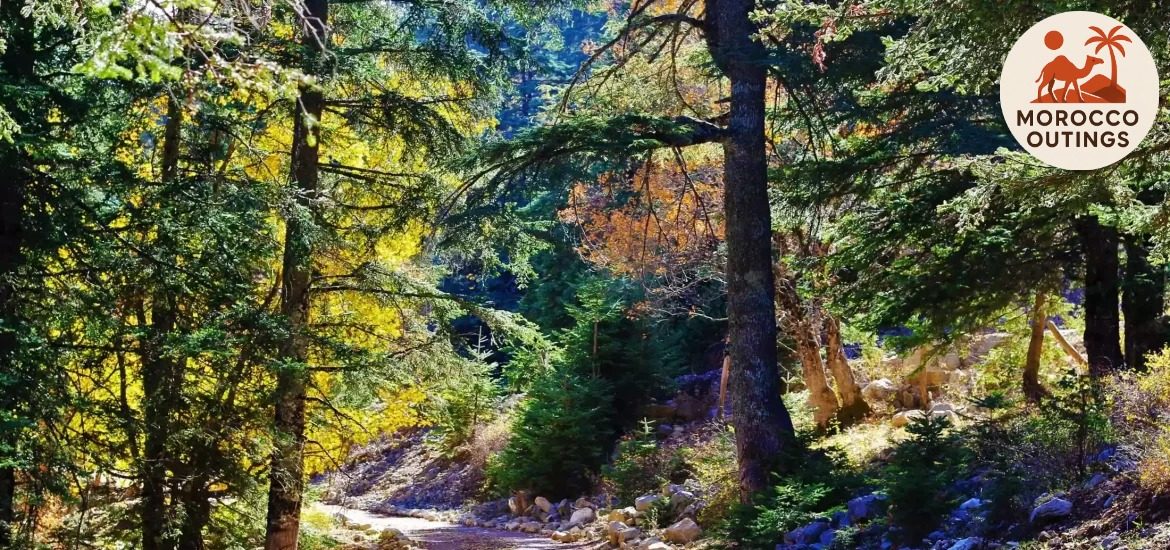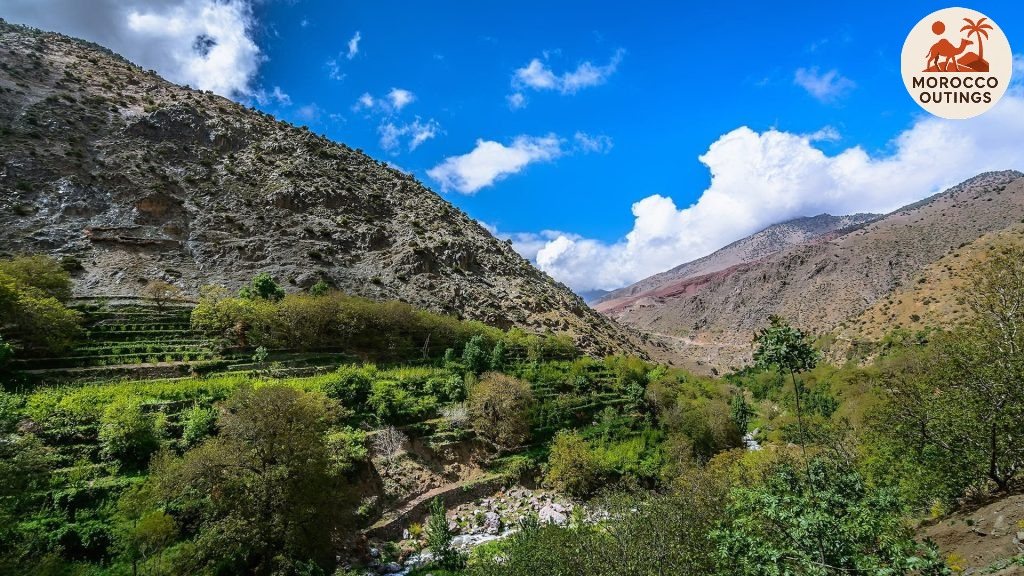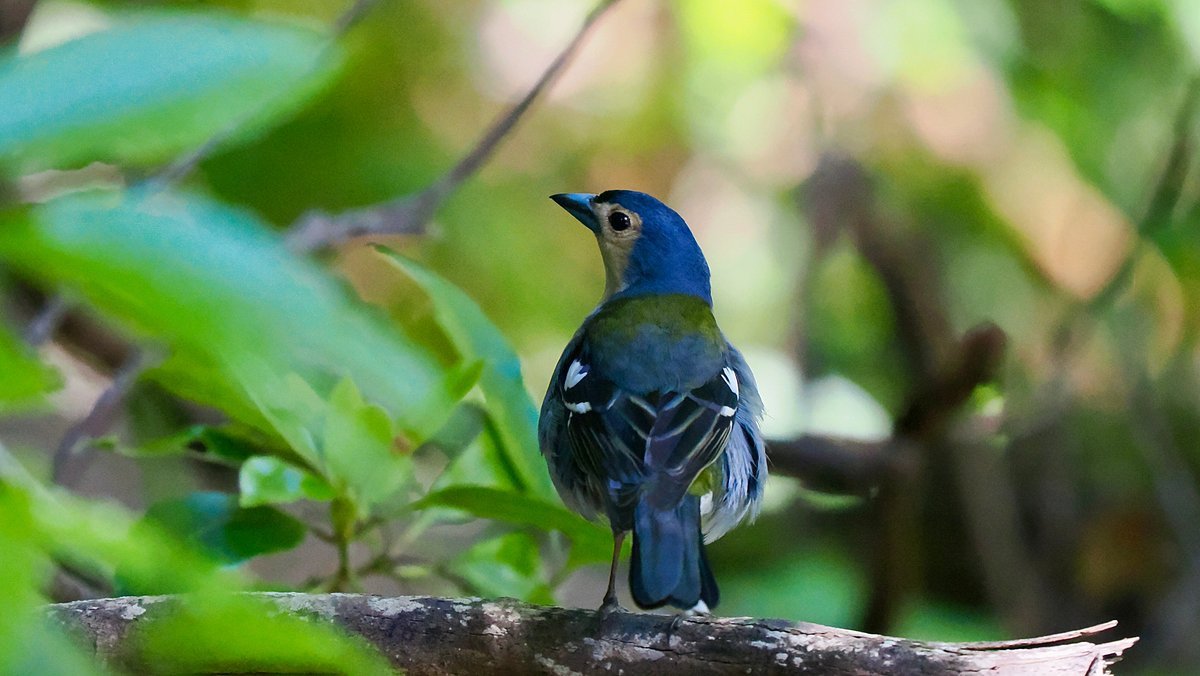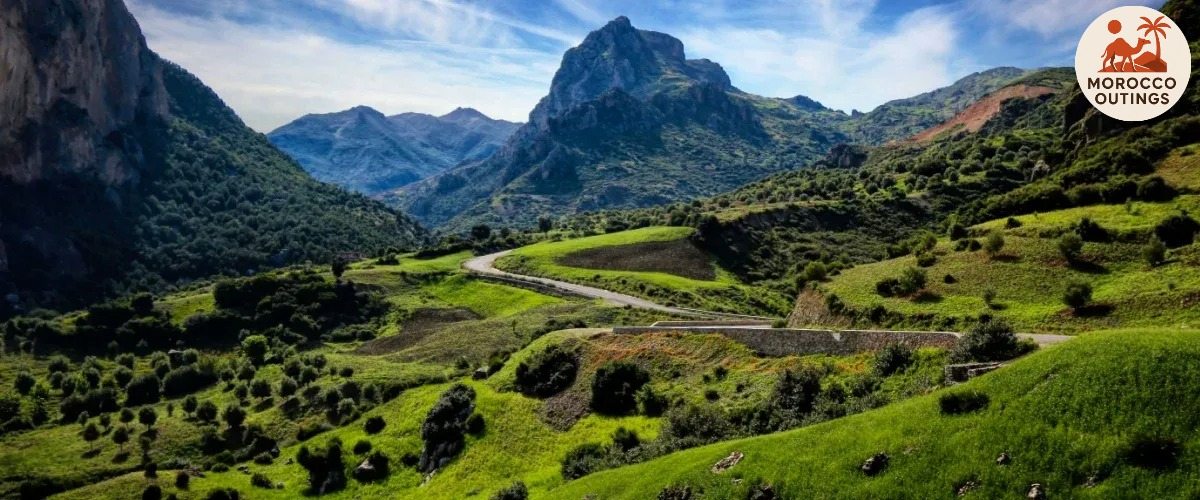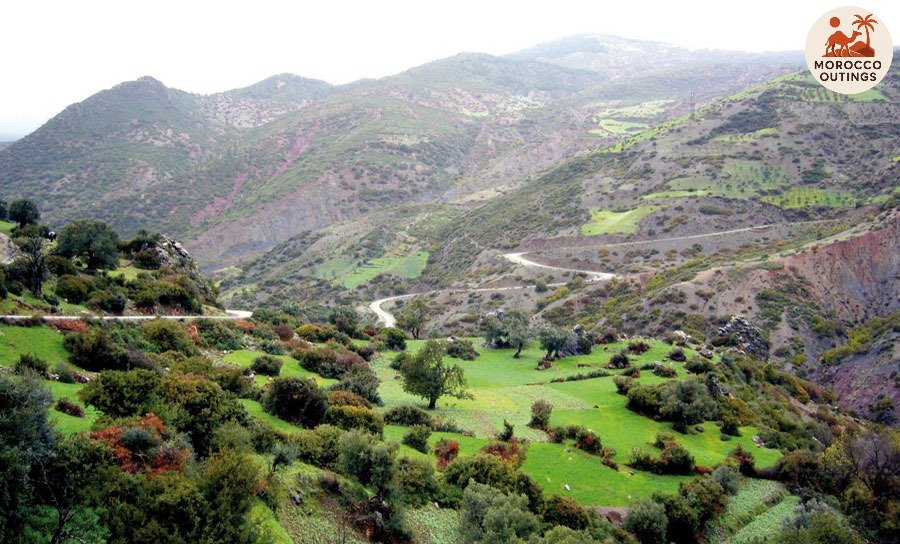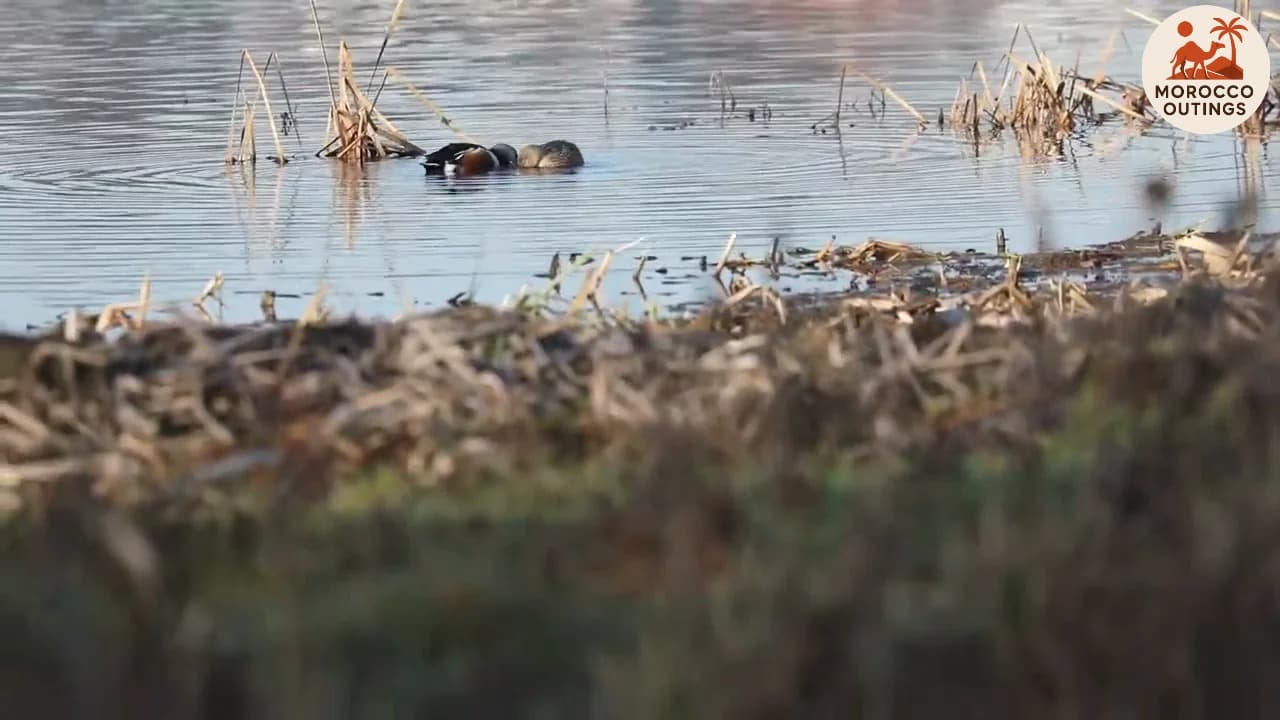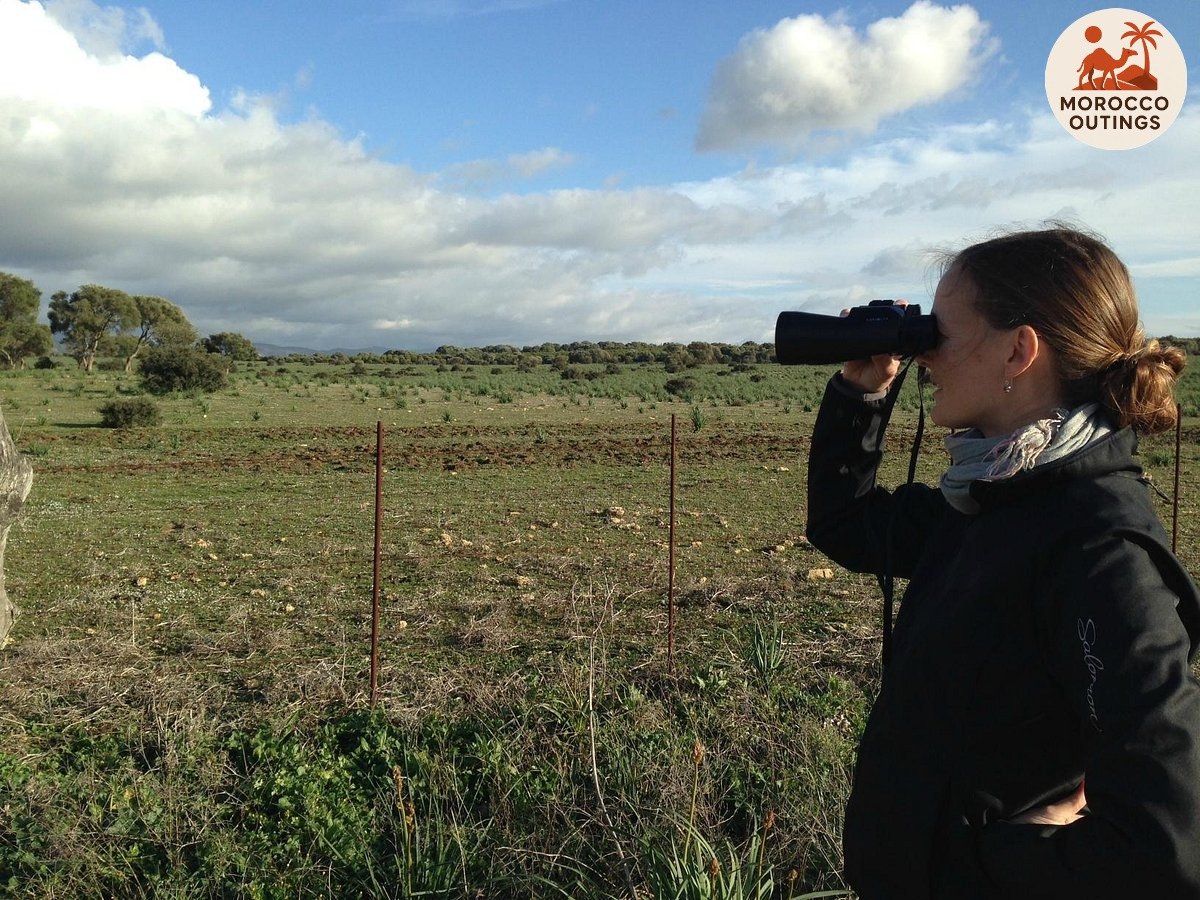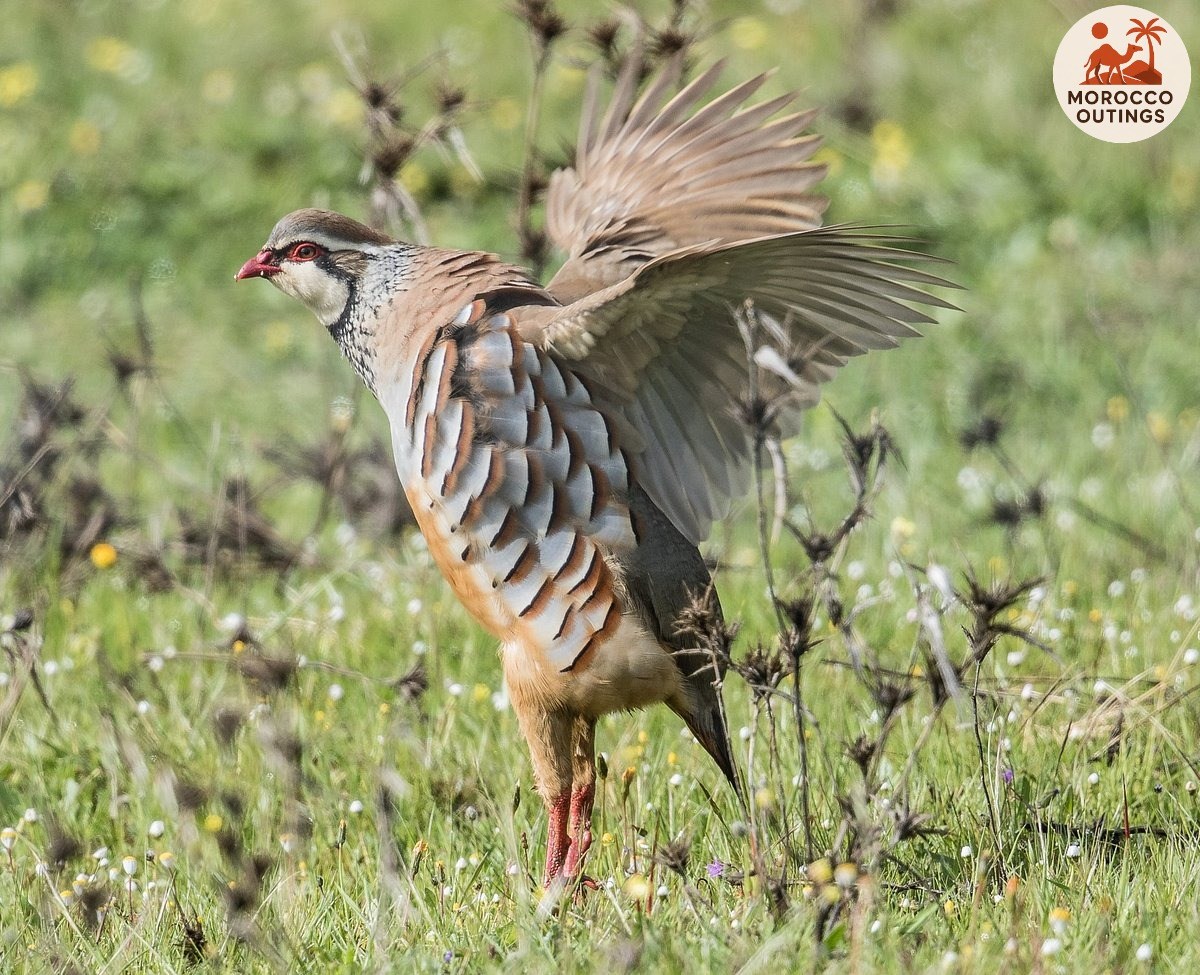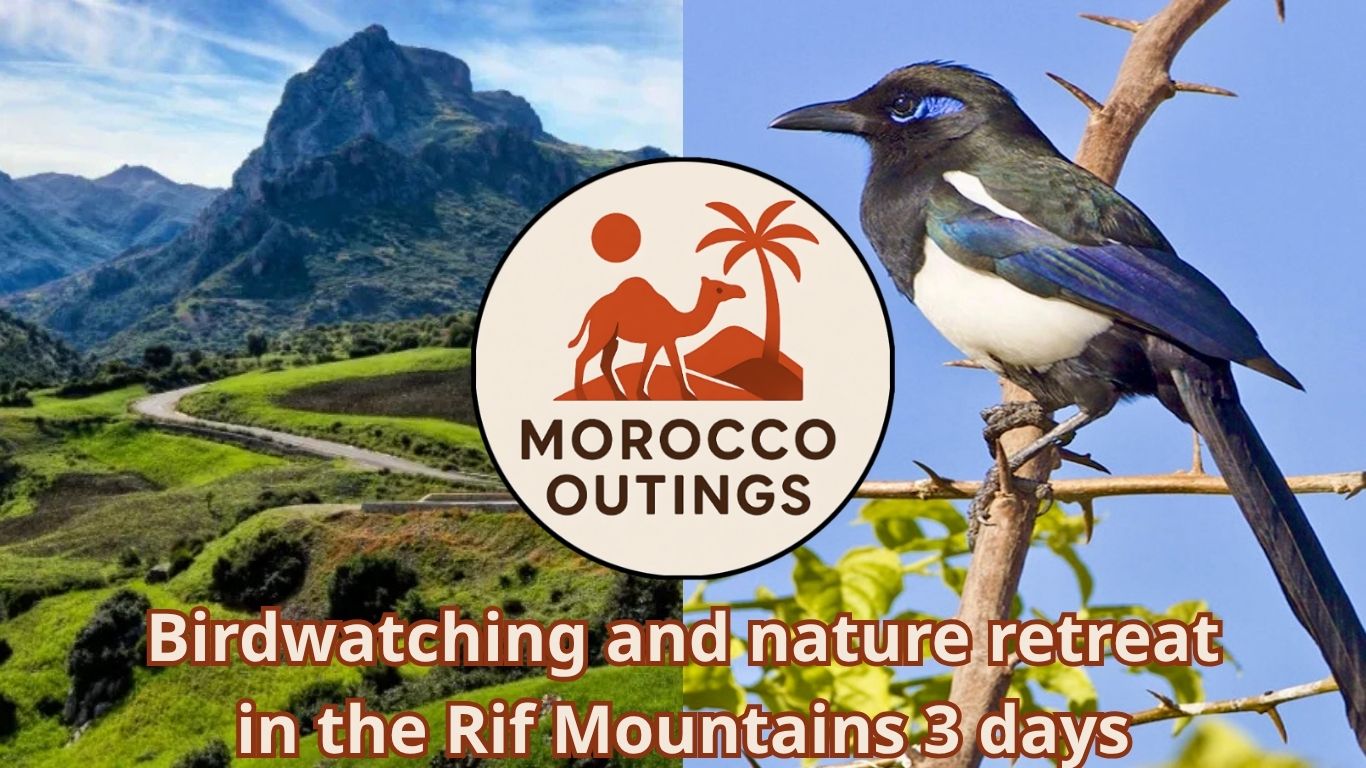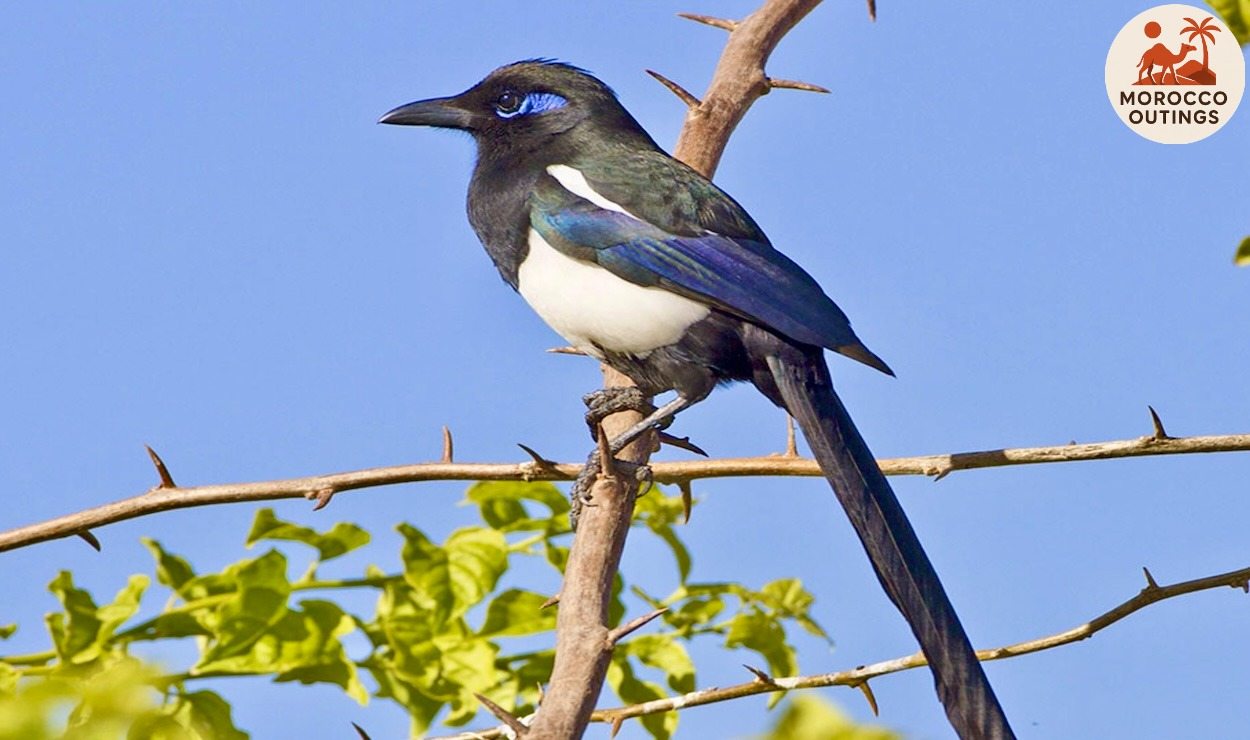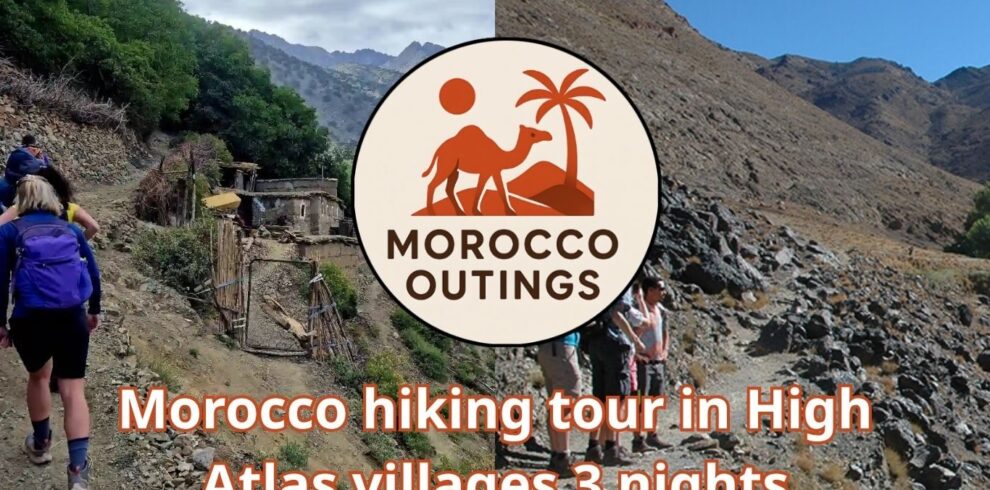Birdwatching and nature retreat in the Rif Mountains 3 days is a serene escape designed for travelers seeking harmony with nature, fresh mountain air, and unforgettable encounters with Morocco’s rich wildlife. Nestled in the northern landscapes of Morocco, the Rif Mountains offer a peaceful sanctuary far from the rush of city life, where rolling hills, lush cedar forests, and hidden valleys create the ideal habitat for a wide variety of bird species, including migratory raptors, woodland songbirds, and rare highland wildlife. This journey is more than just a birdwatching experience—it is a full nature retreat, blending gentle trekking, forest walks, panoramic photography stops, and moments of mindful relaxation in eco-friendly lodges surrounded by untouched landscapes.
Throughout this 3-day retreat, participants will follow curated nature trails guided by expert ornithologists who specialize in the avian life of the Rif region. With every step, travelers will be introduced to the rhythms of mountain life, observing birds in their natural habitat, listening to the distant call of raptors gliding over the ridges, and pausing by natural springs where wildlife gathers at dawn. The experience blends eco-tourism and slow travel, giving time to breathe, observe, and reconnect with nature at a peaceful pace.
In addition to birdwatching, the retreat includes cultural immersion moments such as sipping mountain-grown herbal tea with local Berber hosts, stargazing sessions under the clear Rif skies, and exploring traditional villages known for their organic honey, medicinal herbs, and handmade crafts. Whether you are an avid birder, a nature photographer, or simply someone looking for calm and inspiration in Morocco’s mountain landscapes, this retreat is crafted to awaken your senses and leave you with a renewed appreciation for the silent beauty of the wild.
![]()
Birdwatching and Nature Retreat in the Rif Mountains – 3 Days
Tour Overview
Immerse yourself in the serene wilderness of the Rif Mountains on this 3-Day Birdwatching and Nature Retreat. Experience guided birdwatching walks along cedar and oak trails, observe raptors, songbirds, and migratory species, and explore pristine wetlands. Stay in eco-lodges, enjoy local organic cuisine, participate in field workshops, and take home a digital birdwatching album and observation certificate. This retreat blends adventure, relaxation, and wildlife conservation insights for a truly memorable experience.
Detailed Itinerary
| Day |
Activity |
Details |
| Day 1 |
Into the Highlands – Arrival & First Encounter |
Scenic transfer to the Rif Mountain retreat. Welcome nature briefing, check-in at the eco-lodge, and afternoon guided walk along cedar and oak trails for first bird sightings. Sunset observation with field notes and binocular workshop. Evening campfire gathering and nocturnal bird listening session. |
| Day 2 |
Mountain Dawn Chorus & Immersive Nature Exploration |
Sunrise bird chorus walk and field identification session. Trek through Rif forests spotting raptors, songbirds, and native flora. Picnic lunch by mountain stream observing water birds. Cliff viewpoint observation of migratory birds with panoramic mountain views. Optional nature photography session. Evening stargazing and nocturnal bird monitoring. |
| Day 3 |
Wetland Habitat & Farewell to the Rif Avian Kingdom |
Early morning visit to nearby wetlands to spot waterfowl and rare species. Guided reflection walk and final bird checklist logging. Eco-lodge brunch with local organic products. Closing nature circle discussing wildlife conservation. Departure with digital birdwatching album and observation certificate. |
Price per Person: €290
What’s Included:
2 nights accommodation in eco-lodges with mountain views
Private air-conditioned transportation from/to departure point
Expert birdwatching guide with field expertise
Guided walks and treks in Rif forests and wetlands
Binocular workshop and field note assistance
Picnic and eco-lodge meals with local organic products
Digital birdwatching album and observation certificate
Evening campfire and nocturnal bird listening sessions
What’s Not Included:
International flights to/from Morocco
Personal drinks, snacks, and souvenirs
Optional activities not listed in the itinerary
Travel insurance (recommended)
Tips for guides and lodge staff
Day 1: Into the Highlands – Arrival & First Encounter with the Rif Wilderness
Arrival & Safety Orientation in the Rif Foothills
The day begins with a gentle arrival at the foothills of the Rif Mountains, where the air feels noticeably cooler and lighter, carrying the scent of pine resin and damp forest earth. Before stepping into the heart of this protected ecosystem, participants are welcomed by the local nature guide for a safety orientation and responsible birdwatching briefing.
Here, each guest receives a personal observation kit, including a high-precision binocular, a field logbook for species notation, a whistle for emergency signaling, and a compact hydration flask designed for trekking. The guide introduces the “silence protocol”, an essential practice during birdwatching to avoid disrupting natural behavior. A quick safety checklist is reviewed—staying on designated trails, respecting bird nesting zones, and maintaining a calm pace to ensure both personal safety and minimal environmental impact. This moment sets the tone, blending eco-awareness with a sense of expedition. Guests are reminded that this retreat is not a tour—it is a nature immersion experience, where every step is intentional, and every sound could indicate the presence of a species worth documenting.
Scenic Drive Through Cedar and Pine Valleys
Once the briefing concludes, the journey continues with a scenic drive into the mountain valleys, where the road winds between towering cedar trunks and ancient pine forests. Large panoramic windows reveal wide forest canopies shimmering under the morning light, offering the first chance to spot silhouettes of raptors gliding above the treeline. The guide occasionally slows down the vehicle to allow participants to observe European bee-eaters, kestrels hovering in search of prey, and flocks of finches darting between branches. The vehicle is equipped with adjustable seats and anti-slip flooring to ensure stability during ascending routes, reinforcing the program’s commitment to participant comfort and safety.
Along the way, the guide gives contextual information about the Rif’s bird migration corridors, explaining how certain species use these valleys as navigational channels. This moving observation point creates anticipation and heightened awareness, preparing everyone mentally for the immersive tracking that awaits deeper in the forest.
Guided Forest Walk & Bird Identification Session
The vehicle stops at a trail entrance reserved exclusively for guided ecological tours, away from general tourist paths. The group adjusts their binocular focus wheels as instructed and begins the first guided forest walk, moving slowly along a trail cushioned by fallen cedar needles. Sunlight filters through high branches, creating shifting patches of light where warblers and nuthatches can be observed feeding in the lower canopy layer.
The guide demonstrates how to use hand signals instead of speech to indicate species direction, ensuring quiet communication within the group. Each participant is encouraged to log species visibility in their field notebook, noting features like wing bars, beak shape, and tail flick patterns for more precise identification. Short educational pauses are strategically placed along the path, during which the guide explains how altitude, wind direction, and forest density influence bird behavior during different hours of the day. This session is highly interactive, empowering guests not just to see birds but to understand the ecology behind each sighting.
Golden Hour Birdwatching at the Ridge Viewpoint
As afternoon transitions into golden hour, the group ascends to a ridge viewpoint overlooking layered mountain silhouettes, where the light turns into a soft golden haze ideal for observation. A temporary observation point is established, using a foldable tripod-mounted telescope for longer distance spotting. From this elevated perspective, participants can witness raptors catching thermal updrafts, their wings illuminated by the low sun, creating a dramatic contrast against the sky.
The guide instructs everyone to stand in a semi-circle formation, ensuring equal line-of-sight clearance without obstructing one another’s field of vision. The mountain wind carries a crisp chill, accompanied by the distant echo of goat bells from a forgotten hillside, enhancing the auditory atmosphere of the moment. Guests are encouraged to take slow, controlled binocular sweeps from left to right, a technique used by professional ornithologists to avoid missing fast-moving species. No conversation is allowed during this segment, reinforcing pure connection with wilderness sounds—wing beats, distant calls, and the subtle rustle of feathers against wind.
Eco-Lodge Evening & Traditional Rif Mountain Dinner
As twilight settles, the group heads to the eco-lodge tucked deep within the forest, built with stone foundations and cedarwood beams, blending harmoniously with its surroundings. Upon arrival, shoes are brushed to remove forest debris, maintaining the cleanliness of the lodge and preventing the introduction of external seeds or insects into the habitat. Inside, the ambiance is warm, lit with soft lantern lighting instead of harsh electric fixtures, preserving the night rhythm for local wildlife.
Each participant is assigned a private wooden cabin equipped with thermal blankets, emergency flashlight, and a small balcony overlooking the forest edge, perfect for nocturnal listening later in the evening. Dinner is served in a communal mountain-style dining room, featuring traditional Rif dishes like slow-cooked tagine with mountain herbs, fresh goat cheese, olive oil from nearby terraces, and warm flatbread baked in clay ovens. A brief review circle follows the meal, where participants share their most memorable observation of the day while the guide outlines the bird species expected during the next morning’s dawn chorus session. The night concludes in an atmosphere of quiet mountain serenity, where even the silence feels alive with anticipation.
![]()
![]()
![]()
![]()
Day 2: Mountain Dawn Chorus & Immersive Nature Exploration
Pre-Dawn Safety Prep & Sunrise Bird Chorus Walk
Day two begins in the pre-dawn stillness of the Rif Mountains, where the air carries a crisp chill and the faint scent of dew-laden cedar needles. Before venturing into the forest, participants gather at the eco-lodge’s wooden deck for a comprehensive safety briefing, highlighting essential protocols for early-morning excursions. This includes checking headlamps, stabilizing binocular straps, wearing layered clothing for temperature shifts, and ensuring hydration packs are secured.
Guests are reminded of slip-resistant footwear requirements as trails may be damp, and communication whistles are distributed for emergency signals. Once prepared, the group embarks on a sunrise bird chorus walk, moving silently along narrow forest paths. As the first golden rays filter through pine branches, the forest awakens with the dawn chorus of warblers, tits, and woodpeckers, each species’ call meticulously logged in personal field identification notebooks. The guide demonstrates species differentiation by vocal signature, encouraging participants to note subtle pitch and rhythm variations while maintaining absolute silence to avoid disturbing natural behavior. This early-morning immersion not only hones auditory observation skills but also cultivates a profound connection with the forest’s waking ecosystem.
Forest Trek & Raptors Observation Through Canopy Breaks
Following the chorus walk, the group continues with a rigorous Rif forest trek, designed to provide both exercise and in-depth avian study. The path meanders through dense cedar and pine stands, interspersed with occasional canopy breaks offering sweeping views of distant ridges. Participants practice binocular stabilization techniques, adjusting focus to capture raptors soaring on thermal updrafts above the valley. The guide emphasizes flight pattern interpretation, explaining how species like common buzzards and honey buzzards exploit wind thermals for energy-efficient hunting.
Intermittent stops allow songbird observation at eye level, with careful notation of feather markings, tail flicks, and foraging behavior. Safety protocols are reinforced throughout the trek, including spacing between participants on uneven terrain, awareness of loose roots, and use of trekking poles. The trek also incorporates flora identification, highlighting native shrubs and understory plants that provide food and nesting sites for birds, offering a comprehensive understanding of the Rif forest ecology beyond just avian life.
Mountain Stream Picnic & Waterbird Habitat Scanning
By late morning, the group arrives at a mountain stream nestled within a secluded glade, ideal for both rest and waterbird observation. A picnic area is carefully selected to minimize ecological impact, with biodegradable mats and no trace policy enforced. Guests enjoy a locally sourced meal, including fresh goat cheese, wild herbs, and warm flatbreads, replenishing energy for continued exploration.
While dining, the guide points out species of waterbirds such as kingfishers, wagtails, and moorhens, demonstrating techniques for spotting subtle ripples, reflections, and feeding movements from a safe distance. Participants are instructed on field etiquette near water habitats, ensuring that movement does not scare away sensitive species. This extended stop allows for detailed behavioral observation, from courtship displays to foraging techniques, while reinforcing the connection between water availability and avian diversity in the Rif Mountains.
Cliff Viewpoint Migration Watch & Thermal Flight Patterns
The afternoon session leads to a cliffside viewpoint overlooking multiple valleys, providing a panoramic stage for migratory bird observation. The guide sets up tripods and stabilized telescopes, allowing precise tracking of species in long-range flight patterns. Participants learn to identify migratory markers, including wing beat frequency, tail shape, and flock dynamics, enhancing understanding of seasonal navigation strategies. The cliff location is chosen for its unique thermal updrafts, which raptors exploit to glide effortlessly, creating a living demonstration of physics in nature.
Safety harnesses and barrier ropes are in place, ensuring secure footing along exposed edges. Guests are encouraged to maintain quiet focus while scanning the skies, recording sightings in both digital and field notebooks, and capturing the interplay of light and shadow on wings during the golden afternoon sunlight. This session merges scientific observation with awe-inspiring natural theater, enriching both knowledge and sensory experience.
Optional Nature Photography Masterclass
For those interested in capturing the day’s observations, an optional photography session is conducted at the same cliff viewpoint. An expert guide demonstrates lens selection, focus locking, exposure balancing for bright skies, and tracking fast-moving subjects.
Participants learn composition techniques for framing birds against panoramic landscapes and strategies for minimizing disturbance while photographing wildlife. Tripods and stabilizers are available for precise long-range shots, and instructions emphasize ethical photography, ensuring the safety and comfort of all observed species. This session is also integrated with behavioral documentation, allowing participants to correlate visual data with field notes, blending artistic expression with scientific methodology.
Nightfall Star Gazing & Acoustic Bird Monitoring Ritual
As dusk settles, the group returns to the eco-lodge for evening relaxation and night bird monitoring. Participants gather on the lodge’s terrace under clear skies ideal for star gazing, while guides introduce constellations and nocturnal navigation cues relevant to migratory species. Using acoustic monitoring equipment, guests learn to identify night birds by call and echo, capturing species that are otherwise invisible. The lodge’s low-light policy preserves natural night rhythms, enhancing the sensory experience of sounds and shadows in the Rif ecosystem.
Hot herbal teas and light refreshments are served while participants reflect on the day, logging final species observations, behavioral notes, and photographic highlights. This ritual concludes with a quiet, meditative atmosphere, reinforcing connection to nature, ecological mindfulness, and preparedness for the dawn chorus of the following day.
![]()
![]()
![]()
![]()
Day 3: Wetland Habitat & Farewell to the Rif Avian Kingdom
Early Morning Visit to Nearby Wetlands – Waterfowl & Rare Species Spotting
The day begins before dawn, with participants gathering quietly at the eco-lodge entrance for a pre-departure safety briefing, highlighting protocols for traversing wetland terrain. Guests are equipped with waterproof boots, stabilized binoculars, insect repellent, and lightweight backpacks containing field notebooks and portable water bottles. The guide explains movement etiquette, including maintaining low voices, slow steps, and avoiding sudden gestures to prevent startling sensitive waterfowl. The journey leads to a nearby wetland reserve, a mosaic of shallow ponds, reed beds, and small streams teeming with avian life.
As the sun rises, participants spot ducks, herons, and the elusive black-winged stilt, each species observed with careful attention to behavioral cues, feeding patterns, and wing coloration. The guide demonstrates techniques for distance estimation, lens focusing for moving birds, and recording observations without physical intrusion, ensuring both participant safety and minimal ecological impact. The wetlands’ reflective waters provide natural light amplification, making plumage and subtle markings easier to document in field notebooks or digital logs, while the gentle ripple of water enhances the sensory experience of early morning observation.
Guided Reflection Walk & Final Bird Checklist Logging
After the wetlands excursion, the group embarks on a guided reflection walk along adjacent forested trails. This session emphasizes quiet introspection and the synthesis of data collected over three days. Participants use this time to finalize their bird checklist, logging rare sightings, migratory patterns, and behavioral notes observed during both forest and wetland excursions. The guide encourages peer discussion on identification challenges, teaching techniques for distinguishing similar species based on song patterns, feather arrangement, and habitat preference.
Safety remains paramount: the trail is mapped with clearly marked boundaries and rest stops, and guides monitor for potential hazards such as slippery soil or hidden roots. The walk also integrates eco-awareness lessons, illustrating how each bird sighting relates to broader ecosystem health, and reinforcing sustainable practices that minimize human impact. This reflective activity balances educational rigor with personal contemplation, offering a concluding immersive experience before returning to the lodge.
Eco-Lodge Brunch with Local Organic Products
Upon returning, participants are welcomed with a hearty eco-lodge brunch crafted entirely from local, organic ingredients. The menu includes mountain herb omelets, freshly baked whole-grain bread, seasonal fruits, and herbal infusions harvested from surrounding meadows, emphasizing a farm-to-table experience that mirrors the sustainability principles observed throughout the retreat. Safety and hygiene protocols are rigorously maintained, including hand sanitization stations, temperature-controlled storage for perishable items, and allergen guidance for each dish.
While dining, participants share insights from the morning’s wetland exploration, discussing species interactions, habitat observations, and identification highlights. This brunch provides both nutritional replenishment and social engagement, strengthening the group’s connection before the closing session. The lodge’s wooden deck, overlooking distant wetlands, allows for casual spotting of lingering waterfowl while sipping tea, reinforcing the retreat’s immersive, sensory-rich design.
Closing Nature Circle & Wildlife Conservation Insights
Following brunch, participants gather in a nature circle on the lodge terrace, a structured reflection session designed to synthesize knowledge, foster ecological awareness, and celebrate achievements. The guide leads discussions on local wildlife conservation efforts, migratory route preservation, and sustainable tourism practices, emphasizing the importance of continued engagement beyond the retreat. Participants are encouraged to share personal observations, insights from field notes, and ethical practices adopted during excursions, reinforcing a collective commitment to responsible birdwatching.
Safety is again emphasized, with seating arranged to allow comfortable spacing and unobstructed access to exits, while the circle incorporates interactive demonstrations, such as identifying species from feather samples or acoustic call playback, allowing participants to consolidate their skills in a supportive environment. This session transforms experiential learning into actionable conservation knowledge, leaving guests with both scientific understanding and emotional resonance.
Departure with Digital Birdwatching Album & Observation Certificate
The retreat concludes with a structured departure sequence, during which each participant receives a digital birdwatching album compiling photographs, field notes, and species lists recorded during the three days. An observation certificate is also presented, verifying completion of the Rif Mountain birdwatching program. Guides provide a briefing on safe transport, handling of gear, and retrieval of personal belongings, ensuring the final stage of the retreat mirrors the meticulous safety standards maintained throughout.
As guests prepare to leave, the guide offers final tips for continued birdwatching practice and digital documentation, emphasizing ethical engagement with wildlife. The farewell includes a moment of gratitude for the Rif Mountains’ ecological richness, reinforcing the connection established over the three-day immersive experience. Participants depart with a deepened appreciation for avian diversity, field observation techniques, and conservation ethics, carrying with them both memorable encounters and actionable knowledge to support their continued exploration of natural habitats.
![]()
![]()
![]()
Professional Birdwatching & Nature Retreat Guidelines – Rif Mountains
-
Prepare Smart: Wear layered clothing, waterproof boots, and bring sun protection, insect repellent, and a lightweight backpack.
-
Safety First: Follow guide instructions, stay on marked trails, maintain safe distances from wildlife, and use whistles for emergencies.
-
Silent Observation: Keep voices low; move slowly to avoid disturbing birds and other wildlife.
-
Binocular & Scope Etiquette: Adjust and stabilize optics before approaching observation points; avoid sudden movements.
-
Documentation: Log species, behaviors, and habitat notes in field notebooks or digital devices; include visual and auditory observations.
-
Environmental Responsibility: Carry out all trash, avoid disturbing nests or plants, and follow eco-lodge sustainability practices.
-
Photography Tips: Use zoom lenses, minimize flash, and focus on natural behaviors; respect wildlife space.
-
Hydration & Nutrition: Carry water and light snacks; monitor energy and fatigue during treks.
-
Early & Late Sessions: Arrive early at observation points; dress for temperature changes; practice slow sweep scanning for birds.
-
Reflection & Conservation: Participate in reflection circles, share observations, and follow ethical wildlife and habitat practices.
-
Departure: Organize gear, back up digital logs, and continue supporting conservation efforts beyond the retreat.
Join the Ultimate Rif Mountains Birdwatching & Nature Retreat!
Embark on a 3-day immersive journey into the heart of the Rif Mountains, where pristine forests, serene wetlands, and rare avian species await your discovery. Experience the dawn chorus of mountain songbirds, the thrill of spotting raptors on thermal updrafts, and the tranquility of hidden wetlands.
Our exclusive eco-lodge accommodations provide comfort and sustainability, combining traditional Rif hospitality with modern amenities. Each day is thoughtfully designed to balance expert-guided birdwatching, nature treks, photography opportunities, and reflective wildlife experiences.
Reserve your spot today and enjoy:
-
Personalized guidance from professional ornithologists and nature experts.
-
Fully equipped observation kits, binoculars, and field notebooks.
-
Access to private trails and pristine habitats untouched by mass tourism.
-
A digital birdwatching album and official observation certificate at the end of the retreat.
Dates are limited – secure your place now for an unforgettable nature immersion!
Easy & Secure Booking
Reserve your unforgettable Birdwatching and nature retreat in the Rif Mountains 3 days with just a click – safe, fast, and designed around your adventure.
📧 Email: info@moroccooutings.com
